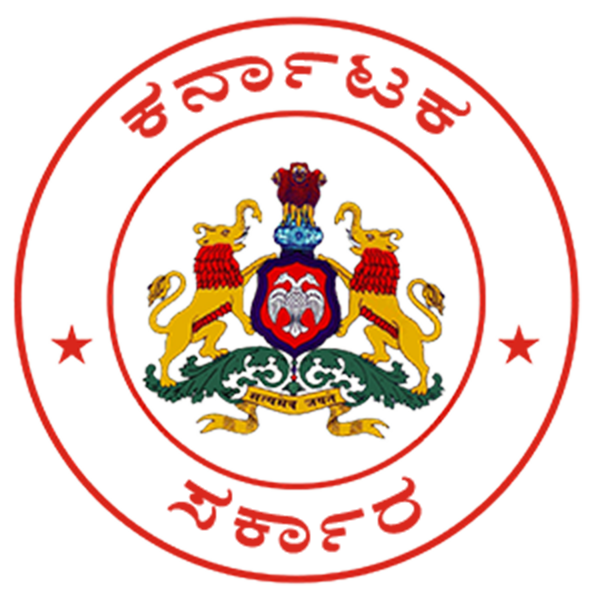ನಮ್ಮಲ್ಲಿ ಆಹಾರ ಪದ್ಧತಿಗಳು ಬೇರೆ ಬೇರೆ ವೈವಿಧ್ಯದಿಂದ ಕೂಡಿವೆ.nammalli āhāra paddhatigaḷu bēre bēre vaividhyadinda kūḍive.we have varieties of food traditions.
ಉತ್ತರ ಕರ್ನಾಟಕದಲ್ಲಿ ಅವರ ಒಂದು ಜೋಳದ ರೊಟ್ಟಿ, ರಾಗಿ ರೊಟ್ಟಿ ಈ ಥರದ ವೈವಿಧ್ಯವೇ ಬೇರೆ ಇದೆ.uttara karnāṭakadalli avara ondu jōḷada roṭṭi, rāgi roṭṭi ī tharada vaividhyavē bēre ide.In north Karnataka, they have different varieties of breads, like jowar bread and raagi bread.
ಆಮೇಲೆ ಹೈದ್ರಾಬಾದ್ ಕರ್ನಾಟಕದವರು, ಆಂಧ್ರದ ಒಂದು influence ನಿoದಾಗಿ ಸ್ವಲ್ಪ ಖಾರ ಜಾಸ್ತಿ ಉಪಯೋಗ ಮಾಡ್ತಾರೆ,āmēle haidrābād karnāṭakadavaru, āndhrada ondu influence niodāgi svalpa khāra jāsti upayōga māḍtāre,then come people of Hyderabad Karnataka, they use more chilly due to the influence of Andra.
ಅದಾದ ಮೇಲೆ ಸ್ವಲ್ಪ ಮಧ್ಯ ಕರ್ನಾಟಕದ ಭಾಗ ಅಲ್ಲಿಯ ಆಹಾರ ಪದ್ಧತಿ ಸ್ವಲ್ಪ ಬೇರೆ ಇದೆ.adāda mēle svalpa madhya karnāṭakada bhāga alliya āhāra paddhati svalpa bēre ide.Then, the people of central Karnataka have different food habit.
ಮಂಡ್ಯ, ಬೆಂಗಳೂರು ಮೈಸೂರು, ಈ ಬದಿಯಲ್ಲಿ ರಾಗಿ ಜಾಸ್ತಿ ಉಪಯೋಗಿಸ್ತಾರೆ,maṇḍya, beṅgaḷūru maisūru, ī badiyalli rāgi jāsti upayōgistāre,In places like Mandya , Mysore and Bangalore they use lot of raagi
ಬೆಂಗಳೂರು, ಮೈಸೂರಿನವರ ಆಹಾರ ಮತ್ತೊಂದು ಸ್ವಲ್ಪ ಬೇರೆ ಥರ,beṅgaḷūru, maisūrinavara āhāra mattondu svalpa bēre thara,the food of Bangalore and Mysore are slightly different
ಕರಾವಳಿಯಲ್ಲಿ ಮತ್ತು ಮಲೆನಾಡಿನಲ್ಲಿ ಮತ್ತೂ ಹೊಂದಾಣಿಕೆ ಸಾಮ್ಯ ಇದ್ರೂ ಕೂಡಾ ಅಲ್ಲಿಯೂ ವ್ಯತ್ಯಾಸಗಳಿದೆ.karāvaḷiyalli mattu malenāḍinalli mattū hondāṇike sāmya idrū kūḍā alliyū vyatyāsagaḷide.Even though it looks similar in coastal and malnad, still there are differences.
ಕರಾವಳಿದ್ದು ಬೇರೆ ಮತ್ತು ಮಲೆನಾಡಿದ್ದು ಬೇರೆ.karāvaḷiddu bēre mattu malenāḍiddu bēre.coastal is different and malnad is different
ಸೌತ್ಲ್ಲಿ ನಾವು ಒಟ್ಟು ಹೇಳುವುದಾದರೆ,sautlli nāvu oṭṭu hēḷuvudādare,if we say in entirety,
ಕರಾವಳಿ, ಮಲೆನಾಡು, ಮತ್ತೆ ಬೆಂಗಳೂರು, ಮೈಸೂರು, ದಕ್ಷಿಣ ಕರ್ನಾಟಕ ಅದು ಒಟ್ಟು ಹೇಳುವುದಿದ್ರೂನೂkarāvaḷi, malenāḍu, matte beṅgaḷūru, maisūru, dakṣiṇa karnāṭaka adu oṭṭu hēḷuvudidrūnūin South, there are similarities and differences in coastal, malnad, bangalore and mysore regions.
ಅಲ್ಲಿ ಸಾಮ್ಯವೂ ಇದೆ, ವೈವಿಧ್ಯವೂ ಇದೆ.alli sāmyavū ide, vaividhyavū ide.thus even though Karnataka has one language, it has seven/eight varieties of food habits.
ಹೀಗೆ ಕರ್ನಾಟಕ ಒಂದು ಭಾಷೆಯ, ಒಂದು ರಾಜ್ಯ ಅಂತಾದ್ರೂhīge karnāṭaka ondu bhāṣeya, ondu rājya antādrū
ಆಹಾರ ಪದ್ಧತಿಯಲ್ಲಿ ಕರ್ನಾಟಕದಲ್ಲಿ ಸುಮಾರು ಏಳೆಂಟು ವಿಭಾಗಗಳನ್ನಾಗಿ ಮಾಡಬಹುದು.āhāra paddhatiyalli karnāṭakadalli sumāru ēḷeṇṭu vibhāgagaḷannāgi māḍabahudu.
ನಾವು ರುಚಿಯ ಬಗ್ಗೆ ಮಾತಾಡುವುದಿದ್ರೆ,nāvu ruciya bagge mātāḍuvudidre,if we talk about the taste,
ರುಚಿಯಲ್ಲಿ ಮುಖ್ಯವಾಗಿರುವಂಥದ್ದು, ಹುಳಿ, ಸಿಹಿ, ಖಾರ, ಒಗರು ಮತ್ತು ಉಪ್ಪು.ruciyalli mukhyavāgiruvanthaddu, huḷi, sihi, khāra, ogaru mattu uppu.it can be identifid as sour, sweet, spicy, bitter and salty.
ಉಪ್ಪಿಗಿಂತ ರುಚಿಯಿಲ್ಲ ಎಂದು ಒಂದು ಮಾತೇ ಉಂಟು.uppiginta ruciyilla endu ondu mātē uṇṭu.There is a proverb that says ‘nothing is tastier than salt’.
ಆದ್ರೆ ಉಪ್ಪು ಜಾಸ್ತಿಯಾದ್ರೆ, ಅದಕ್ಕಿಂತ ಕಷ್ಟವೂ ಇನ್ನೊಂದಿಲ್ಲ,ādre uppu jāstiyādre, adakkinta kaṣṭavū innondilla,at the same time if we add excess salt it is a bigger problem.
ಈ ಉಪ್ಪು ಅದರ ಬಗ್ಗೆ ಜಾಸ್ತಿ ಹೇಳಬೇಕಾಗಿಲ್ಲ.ī uppu adara bagge jāsti hēḷabēkāgilla.There is no need to say much about salt.
ಎಲ್ಲಾದಕ್ಕೂ ನಾವು ಒಂದಿಷ್ಟನ್ನು ಹಾಕಿಕೊಂಡು ಬರುವಂತಾದ್ದು,ellādakkū nāvu ondiṣṭannu hākikoṇḍu baruvantāddu,we use little salt in all food.
ಅದು ರುಚಿಗೊಂದಿಷ್ಟು ಉಪ್ಪು ಅಂತ್ಲೇ ಮಾತು.adu rucigondiṣṭu uppu antlē mātu.as the saying goes, salt according to taste.
ಇನ್ನು ಹುಳಿ, ಸಿಹಿ, ಖಾರದ ಬಗ್ಗೆ ಹೇಳುವುದಾದ್ರೆ,innu huḷi, sihi, khārada bagge hēḷuvudādre,If I were to talk about sour, sweet and spicy
ಖಾರ ಒಂದು ಸ್ವಲ್ಪವಾಗಿ ಪ್ರಾದೇಶಿಕ.khāra ondu svalpavāgi prādēśika.Spice is a little bit regions specific.
ಕೆಲವು ಆಹಾರಗಳಿಗೆ ಖಾರ ಜಾಸ್ತಿ, ಕೆಲವು ಆಹಾರಗಳಿಗೆ ಖಾರ ಕಡಿಮೆ.kelavu āhāragaḷige khāra jāsti, kelavu āhāragaḷige khāra kaḍime.some cuisine need more chilly. some cuisine needs less chilly.
ಮಾಂಸಾಹಾರಕ್ಕೆ ಖಾರ ಜಾಸ್ತಿ, ಸಸ್ಯಾಹಾರಕ್ಕೆ ಖಾರ ಕಡಿಮೆ.māṁsāhārakke khāra jāsti, sasyāhārakke khāra kaḍime.non vegitarian cuisine requires more chilly It is less chilly for vegetarian food.
ಸಸ್ಯಾಹಾರದಲ್ಲಿಯೂ ಕೆಲವು ತರಕಾರಿಗಳಿಗೆ ಖಾರ ಕಡಿಮೆ, ಕೆಲವು ತರಕಾರಿಗಳಿಗೆ ಖಾರ ಜಾಸ್ತಿ.sasyāhāradalliyū kelavu tarakārigaḷige khāra kaḍime, kelavu tarakārigaḷige khāra jāsti.even in vegetarian food , some require much leser chilly some vegetable require more.
ಅದು ಅವರವರು ಮಾಡಿಕೊಂಡ ಒಂದು ಅಭ್ಯಾಸದ ಮೇಲೆ ಬರುತ್ತದೆ.adu avaravaru māḍikoṇḍa ondu abhyāsada mēle baruttade.it depends on their practices
ಒಂದೊಂದು ಮನೆತನಗಳಲ್ಲಿನ ನಡೆದುಕೊಂಡು ಬಂದ ಅಭ್ಯಾಸದ ಮೇಲೆ ಬರ್ತದೆ.ondondu manetanagaḷallina naḍedukoṇḍu banda abhyāsada mēle baratade.it depends on practices of different family traditions.
ಮಾಂಸಾಹಾರದ ಖಾರದಲ್ಲಿ ಮೀನಿಗೆ ಹಾಕುವ ಖಾರದ ಅಂಶ ಬೇರೆ,māṁsāhārada khāradalli mīnige hākuva khārada aṁśa bēre,In non-vegetarian, amount of chilly used in fish curry is different,
ಮತ್ತೆ White meat, Chicken, Muttonಗೆ ಹಾಕುವ ಖಾರದ ಅಂಶ ಬೇರೆ.matte White meat, Chicken, Muttonge hākuva khārada aṁśa bēre.and different sources of spices for white meat, chicken and mutton.
ಅದು ಕೂಡಾ ಅವರವರು ಮಾಡಿಕೊಂಡು ಅಭ್ಯಾಸದ ಮೇಲೆ ಬರುತ್ತದೆ.adu kūḍā avaravaru māḍikoṇḍu abhyāsada mēle baruttade.that too come under their different food practices.
Chicken, Mutton, White meatಗೆ ಒಂದು ಸ್ವಲ್ಪ ಜಾಸ್ತಿ ಖಾರಹಾಕ್ತಾರೆ.Chicken, Mutton, White meatge ondu svalpa jāsti khārahāktāre.more spices are used for chicken, mutton and white meat.
ಅದರ ಮಸಾಲೆಯೂ ಸ್ವಲ್ಪ ಬೇರೆ ಇರುತ್ತದೆ.adara masāleyū svalpa bēre iruttade.in this cusine the spices are also used differently.
ಇನ್ನು ಮೀನಿಗೆ ಹಾಕುವ ಮಸಾಲೆ ಮತ್ತು ಅದರ ಖಾರದ ಅಂಶ ಬೇರೆ ಇರುತ್ತದೆ.innu mīnige hākuva masāle mattu adara khārada aṁśa bēre iruttade.the amount of spices used in fish cury is different and the amount of chilly is also varies.
ಆ ಅಡಿಗೆಯನ್ನು ಚೆನ್ನಾಗಿ ಬಲ್ಲವರು ಅವರು ಅದನ್ನು ನೋಡಿದ ತಕ್ಷಣವೇā aḍigeyannu cennāgi ballavaru avaru adannu nōḍida takṣaṇavēThose who know the recipe very well,
ಗುರುತು ಹಿಡಿಯುವಷ್ಟು ರುಚಿಕಟ್ಟಾಗಿ ಅದನ್ನು ತಿಳ್ಕೊಂಡಿರುತ್ತಾರೆ.gurutu hiḍiyuvaṣṭu rucikaṭṭāgi adannu tiḷkoṇḍiruttāre.they identify its taste as soon as they see it,
ಇನ್ನು ಸಿಹಿಯ ವಿಷಯಕ್ಕೆ ಬಂದ್ರೆ,innu sihiya viṣayakke bandre,When it comes to the subject of sweet,
ಸಿಹಿ ನಾವು ಸಾಧಾರಣವಾಗಿ ಬಳಸುವುದು ಬೆಲ್ಲ, ಸಕ್ಕರೆsihi nāvu sādhāraṇavāgi baḷasuvudu bella, sakkareWe usually use sweet like jaggery, sugar…
ಕೆಲವೊಂದು ವಿಷಯಗಳಿಗೆ ಪಾನೀಯಗಳಿಗೆ ಜೇನು ಬಳಸಬಹುದು, ಸಿಹಿಯ ಬದಲಾಗಿ.kelavondu viṣayagaḷige pānīyagaḷige jēnu baḷasabahudu, sihiya badalāgi.sometimes we use honey for some drinks as alternative for sweetness.
ಇನ್ನು ಹುಳಿಯ ವಿಷಯಕ್ಕೆ, ಹುಳಿ ಸಾಮಾನ್ಯವಾಗಿ ಪ್ರಾದೇಶಿಕವಾಗಿinnu huḷiya viṣayakke, huḷi sāmānyavāgi prādēśikavāgiWhen it comes to sour, naturally use of sour is regional,
ಅಥವಾ ಇಡೀ ಕರ್ನಾಟಕದಲ್ಲಿ ಬಳಕೆಯಲ್ಲಿ ಇರುವ ಹುಳಿ ನಮ್ಮ Tamarind ಅಂತಹ ಹೇಳುವಂತಹ ಹುಳಿ.athavā iḍī karnāṭakadalli baḷakeyalli iruva huḷi namma Tamarind antaha hēḷuvantaha huḷi.or the location of sour at our Karnataka, the tamarind
ಉದ್ದಕ್ಕೆ ಕೋಡಿನ ರೂಪದಲ್ಲಿ ಬರುತ್ತದೆ.uddakke kōḍina rūpadalli baruttade.is slight long like the form of horn
ಅದು Acidity ಕೊಡುತ್ತದೆ ಅನ್ನುವ ಕಾರಣದಿಂದಾಗಿ ಇತ್ತಿಚೆಗೆ ಸ್ವಲ್ಪ ನಾವು ಎಸಲು ಹುಳಿ ಅಂತಹ,adu Acidity koḍuttade annuva kāraṇadindāgi itticege svalpa nāvu esalu huḷi antaha,it causes acidity; hence recently we do not use it. For that reason,
ಮಲೆನಾಡಿನಲ್ಲಿ ಸಿಗುವಂತಹ ಹುಳಿಯನ್ನು ಬಳಸ್ತಾ ಇದ್ದಾರೆ.malenāḍinalli siguvantaha huḷiyannu baḷastā iddāre.they use sour which is available in malnad
ಆ ಹುಳಿ ಪೂರ್ತಿ ಹಣ್ಣಾಗುವ ಮೊದಲು Botanical ಹೆಸರು Garcinia indica ಅಂತ ಹೇಳಿ,ā huḷi pūrti haṇṇāguva modalu Botanical hesaru Garcinia indica anta hēḷi,it was named botanical, garsia indica before when that sour becomes ripened. .
ಅದು ಪೂರ್ತಿ ಹಣ್ಣಾಗುವ ಮೊದಲು, ಬೆಳ್ದು ಹುಳಿಯನ್ನು ಕೊಯ್ದು,adu pūrti haṇṇāguva modalu, beḷdu huḷiyannu koydu,it was cut before its maturity. After maturity it as called garcinia Indica
ಅದು ಒಂದು ಇಷ್ಟು ದೊಡ್ಡ ಕಾಯಿ ಅದನ್ನು ಗಾರ್ಸಿನಿಯಾ ಇಂಡಿಕಾ ಅಂತ ಹೇಳ್ತಾರೆ ಅದನ್ನುadu ondu iṣṭu doḍḍa kāyi adannu gārsiniyā iṇḍikā anta hēḷtāre adannu
.ಕೊಯ್ದು, Slice ಮಾಡಿ ಒಣಗಿಸಿ, ಅದರ ಬೀಜವನ್ನು, ನಡು ತಿರುಳನ್ನು ತೆಗೆದು.koydu, Slice māḍi oṇagisi, adara bījavannu, naḍu tiruḷannu tegeduit is cut, sliced and dried-up. The core of seed is removed,
ಪುಡಿ ಮಾಡಿ ಆಮೇಲೆ ಅದನ್ನು ಉಪಯೋಗಿಸುವಂತಹದ್ದು,puḍi māḍi āmēle adannu upayōgisuvantahaddu,made powder and used.
ಅದರ ಬದಲಿಗೆ ನಾವು ಆಮ್ಚೂರ್ Powder ಅಂತ ಹೇಳಿadara badalige nāvu āmcūr Powder anta hēḷiinstead of aamchur powder
Northಲ್ಲಾ ತುಂಬಾ ಉಪಯೋಗಿಸುವುದು, ಆಮ್ಚೂರ್ ಪೌಡರ್,Northllā tumbā upayōgisuvudu, āmcūr pauḍar,the northern people use it excessively, .
Mango powder ಅಂತ ಹೇಳಿ ಒಣ ಮಾವಿನ ಕಾಯಿಯ ಪುಡಿ ಅದು.ಅದನ್ನು ಉಪಯೋಗಿಸುತ್ತಾರೆMango powder anta hēḷi oṇa māvina kāyiya puḍi adu.adannu upayōgisuttārearmchur powder is mango powders used
ಇಲ್ಲ ನಮ್ಮ ಕರಾವಳಿ Beltಲ್ಲಿ ಮತ್ತೆ ಬಿಂಬುಳಿಯನ್ನು ಉಪಯೋಗಿಸುತ್ತಾರೆ.ಅದು ಹುಳಿಯೇ.illa namma karāvaḷi Beltlli matte bimbuḷiyannu upayōgisuttāre.adu huḷiyē.In Our coastal belt we use bembuli; it is also sour.
ಈ ರೀತಿ ಹುಳಿಯಲ್ಲಿ ಬೇಕಾಷ್ಟು varietyಗಳುಂಟು.ī rīti huḷiyalli bēkāṣṭu varietygaḷuṇṭu.Like this there are varieties in sour.
ಇಲ್ಲದೆ ಕರಂಡೆ ಅಂತಹ ಒಂದು ಕಾಯಿ ಬರುತ್ತದೆ.illade karaṇḍe antaha ondu kāyi baruttade.karande is a form of fruit
ಆ ಕರೆಂಡೆಯನ್ನು ಒಣಗಿಸಿ ಪುಡಿ ಮಾಡಿ ಉಪಯೋಗಿಸುತ್ತಾರೆ.ā kareṇḍeyannu oṇagisi puḍi māḍi upayōgisuttāre.The dried karande was made into powder and used.
ಇಲ್ಲದೆ ಜಾರಿಗೆ ಹಣ್ಣು ಅಂತ ಒಂದು ಬರುತ್ತದೆ ಅದನ್ನು ಉಪಯೋಗಿಸುತ್ತಾರೆ.illade jārige haṇṇu anta ondu baruttade adannu upayōgisuttāre.the Jarige is form of fruit; it also used.
ಹೀಗೆ ಹುಳಿಯಲ್ಲಿ ಬೇರೆ ಬೇರೆ ವೈವಿಧ್ಯಗಳುಂಟು.hīge huḷiyalli bēre bēre vaividhyagaḷuṇṭu.Thus there are varieties in sour.
ಕೆಲವು ತರಕಾರಿಗೆ ಹುಳಿ ಇದೇ ಆಗ್ಬೇಕು, ಅದೇ ಆಗ್ಬೇಕು ಅಂತ ಇರುತ್ತದೆ.kelavu tarakārige huḷi idē āgbēku, adē āgbēku anta iruttade.some vegetables requires specific sour.
ಮೀನಿಗೆ ಹೆಚ್ಚಾಗಿ ಬಿಂಬುಳಿಯನ್ನು ಹಾಕ್ತಾರೆ ಅಂತ ಕೇಳಿದ್ದೇನೆ.mīnige heccāgi bimbuḷiyannu hāktāre anta kēḷiddēne.I have heard that Bimbuli is largely used in fish curry.
ಇನ್ನು ನಾವು ಪತ್ರೋಡೆ ಎಲ್ಲ ಮಾಡ್ಬೇಕಾದ್ರೆ ಕೇಸುವಿನೆಲೆ ಅಡಿಗೆಗೆ ಹುಣಿಸೆ ಹಣ್ಣೇ ಆಗ್ಬೇಕು.innu nāvu patrōḍe ella māḍbēkādre kēsuvinele aḍigege huṇise haṇṇē āgbēku.For making patrode we need the leaf of kesu
ಉದ್ದ ಕೋಡಿನ ರೀತಿಯಲ್ಲಿ ಬರುವ ಹುಣಿಸೆ ಹಣ್ಣಿನ ಹುಳಿಯೇ ಆಗ್ಬೇಕುudda kōḍina rītiyalli baruva huṇise haṇṇina huḷiyē āgbēkuand tamarind is necessary which is slightly long like the form of horn.
ಅದಕ್ಕೆ ಬೇರೆ ರೀತಿಯ ಹುಳಿಯನ್ನು ಹಾಕಿದ್ರೆ ಅದರ ತುರಿಕೆಯ ಭಾವವನ್ನು ಅದು ತೆಗೆಯುವುದಿಲ್ಲ,adakke bēre rītiya huḷiyannu hākidre adara turikeya bhāvavannu adu tegeyuvudilla,If we put other sours, it will not give taste.
ಅದಕೋಸ್ಕರ ಕೆಲವು ತರಕಾರಿಗಳಿಗೆ, ಕೆಲವು ಅಡಿಗೆಗಳಿಗೆadakōskara kelavu tarakārigaḷige, kelavu aḍigegaḷigeIf you add other sours, that will not take out the itching..
ಇಂತದ್ದೇ ಹುಳಿಯಾಗ್ಬೇಕೂಂತ ಕೆಲವು ನಿಯಮಗಳಿರುತ್ತವೆ.intaddē huḷiyāgbēkūnta kelavu niyamagaḷiruttave.Because of these reasons, some cuisines have rules to add a particular sour.
ಅದು ಬಿಟ್ಟು ನಾವು ರುಚಿಗಳಲ್ಲಿ ಹೇಳುವುದಾದ್ರೆadu biṭṭu nāvu rucigaḷalli hēḷuvudādreLeaving aside, if we talk about tastes,
ಬೆಳ್ಳುಳ್ಳಿ, ನೀರುಳ್ಳಿ ಅದ್ರದ್ದೇ ಆದಂತಹ ಸ್ಥಾನದಲ್ಲಿ ನಿಂತಿರುವಂತಹದ್ದು.beḷḷuḷḷi, nīruḷḷi adraddē ādantaha sthānadalli nintiruvantahaddu.garlic and onion have their own places.
ಆ ಬೆಳ್ಳುಳ್ಳಿ ನೀರುಳ್ಳಿಯ ರುಚಿ ತುಂಬಾ different,ā beḷḷuḷḷi nīruḷḷiya ruci tumbā different,The tastes of Garlic and onion are too different. We call it as ghat-eri
ಅದರದ್ದೊಂದು ಘಾಟ್ ಅಥವಾ ಎರಿಯಂತ ಹೇಳುತ್ತೇವೆ. ಆ ಘಾಟ್ ರುಚಿ ಅದರದ್ದು,adaraddondu ghāṭ athavā eriyanta hēḷuttēve. ā ghāṭ ruci adaraddu,Generally ghat taste goes with non-vegetarian cuisine.
ಆ ರುಚಿ ಸಾಮಾನ್ಯವಾಗಿ ಈ ಮಾಂಸಾಹಾರ ಅಡಿಗೆಗೆ ಒಗ್ಗಿ ಹೋಗುವಂತಹದ್ದು,ā ruci sāmānyavāgi ī māṁsāhāra aḍigege oggi hōguvantahaddu,
ಅದನ್ನು ಸಸ್ಯಾಹಾರದಲ್ಲಿ ಬಳಸುವುದು ಸ್ವಲ್ಪ ಕಡಿಮೆ.adannu sasyāhāradalli baḷasuvudu svalpa kaḍime.that is less used in vegetable cuisine.
ಅಡಿಗೆ ಮನೆಯಲ್ಲಿ ನಾವು ದಿನನಿತ್ಯ ಬೇಕಾದಷ್ಟು ವಸ್ತುಗಳನ್ನು ಉಪಯೋಗಿಸುತ್ತಾ ಇರ್ತೇವೆ,aḍige maneyalli nāvu dinanitya bēkādaṣṭu vastugaḷannu upayōgisuttā irtēve,Daily we use enough materials in Kitchen, big, small, vivid shapes
ಸಾಮಾನುಗಳನ್ನು ಉಪಯೋಗಿಸುತ್ತಾ ಇರ್ತೇವೆ,sāmānugaḷannu upayōgisuttā irtēve,Normally, cuisine is devotion. The devotions are related to their personal feeling; likewise the cuisine is also related to felling- taste, salt, sour, chilly sweet. Combination of all these are called Pancbhakshya paramanna.
ದೊಡ್ಡದು, ಚಿಕ್ಕದು, ನಾನಾ ಸೈಜ್ನಲ್ಲಿ ಅದನ್ನು ಬಳಕೆ ಮಾಡಿಕೊಳ್ಳುತ್ತೇವೆ.doḍḍadu, cikkadu, nānā saijnalli adannu baḷake māḍikoḷḷuttēve.We call it shaDrasa in what way they experienced? in what way they practiced? Accordingly, our taste has accompanied us all along
ಹೀಗೆ ಅಡಿಗೆ ಅನ್ನುವಂತಹದ್ದು ಸಾಧಾರಣ ಭಕ್ತಿ ಹೇಗೆ ಅವರವರ ಭಾವಕ್ಕೆ ಅಂತ ಉಂಟೋhīge aḍige annuvantahaddu sādhāraṇa bhakti hēge avaravara bhāvakke anta uṇṭō
ಅವರವರ ಅಡುಗೆ ಕೂಡ ಅವರವರ ಭಾವಕ್ಕೆ, ರುಚಿಯ ಭಾವ.avaravara aḍuge kūḍa avaravara bhāvakke, ruciya bhāva.
ರುಚಿ, ಉಪ್ಪು, ಹುಳಿ, ಖಾರ, ಸಿಹಿ ಎಲ್ಲವೂ ಸೇರಿಕೊಂಡಾಗruci, uppu, huḷi, khāra, sihi ellavū sērikoṇḍāga
ಪಂಚಭಕ್ಷ ಪರಮಾನ್ನ ಅಂತ ಹೇಳ್ತೇವೆ. ಷಡ್ರಸಗಳು ಅಂತ ಹೇಳ್ತೇವೆ.pañcabhakṣa paramānna anta hēḷtēve. ṣaḍrasagaḷu anta hēḷtēve.
ಇದನ್ನು ಅವರು ಯಾವ ರೀತಿಯಲ್ಲಿ ಅಭ್ಯಾಸ ಮಾಡಿಕೊಂಡು, ಯಾವ ರೀತಿಯಲ್ಲಿ ಅನುಭವಿಸಿಕೊಂಡು,idannu avaru yāva rītiyalli abhyāsa māḍikoṇḍu, yāva rītiyalli anubhavisikoṇḍu,
ಯಾವ ರೀತಿಯಲ್ಲಿ ರೂಢಿಸಿಕೊಂಡು ಬಂದಿದ್ದಾರೆ ಅದಕ್ಕೆ ಸರಿಯಾಗಿ ನಮ್ಮ ರುಚಿ ನಮ್ಮ ಜೊತೆಗೇ ಬೆಳೆದು ಬಂದಿರುತ್ತದೆ.yāva rītiyalli rūḍhisikoṇḍu bandiddāre adakke sariyāgi namma ruci namma jotegē beḷedu bandiruttade.

